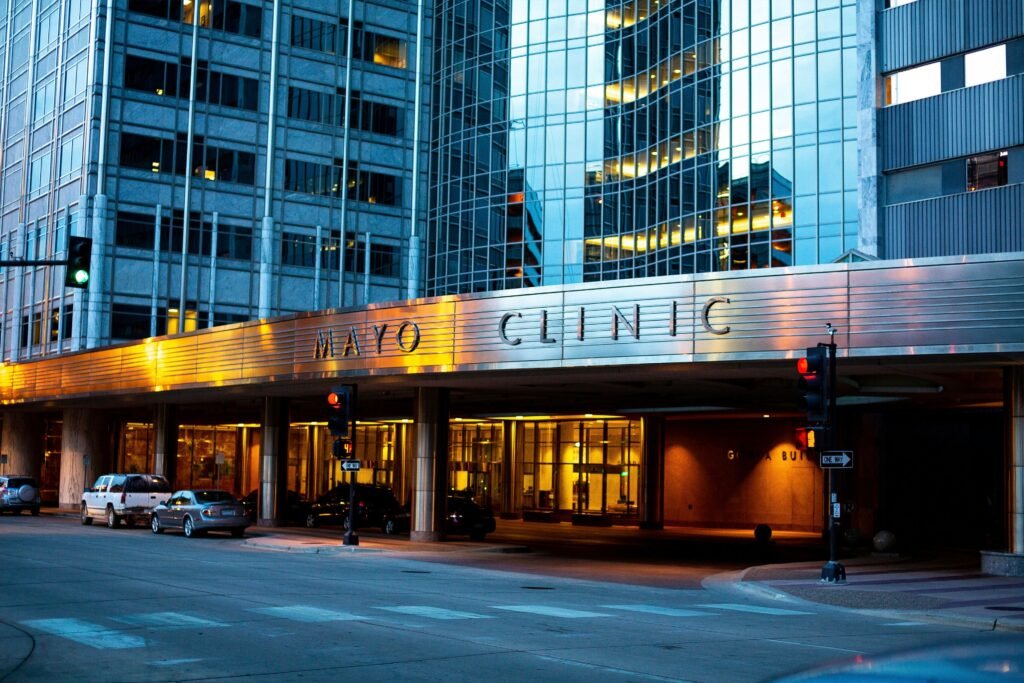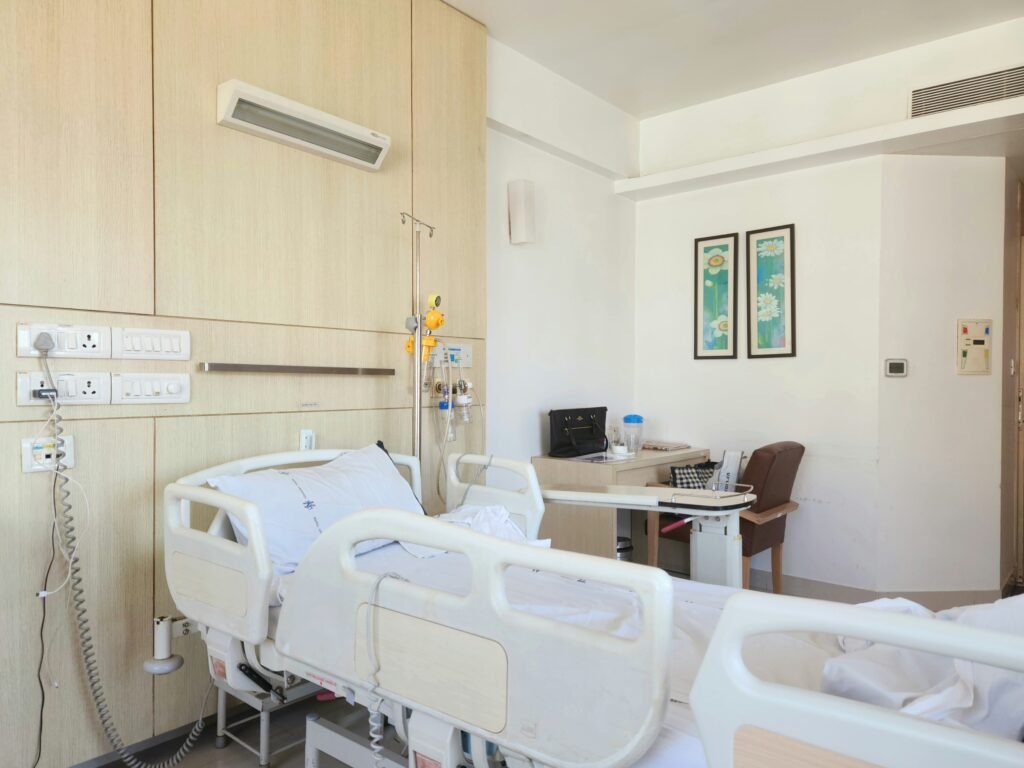Canada’s healthcare story is famous for its universal access and strong public system, yet a quieter companion has always existed alongside it: a focused, tightly regulated private sector that fills gaps, speeds access, and concentrates on specific services. While the term “private hospital” can mean very different things across countries, in Canada it generally refers to facilities that operate independently of the public hospital system for some or all services—often as specialized surgical centres, executive health clinics, or diagnostic hubs. They don’t replace Medicare; rather, they tend to complement it by offering narrower scopes of practice, predictable scheduling, and concierge-like experiences that many patients find reassuring when time, privacy, or specialization matters most.
In practice, these centres lean into what they do best: highly standardized procedures, rapid diagnostics, and patient-centered amenities. Hernia repair clinics that look after thousands of cases with remarkable consistency; eye institutes that streamline cataract and retinal workflows; and executive health practices that compress a year’s worth of tests into a single morning—these are the calling cards of Canada’s private tier. If you’ve ever waited months for a non-urgent procedure, you already intuit the appeal: shorter wait times, transparent itineraries, and tightly choreographed care teams.
Of course, context matters. Provincial rules shape exactly what can be billed privately, which insurance is permitted, and how these facilities interact with the public system. That’s why the private map isn’t identical from British Columbia to Ontario to Quebec. Still, certain names repeatedly surface for quality, specialization, and a consistent patient experience. In this guide, we’ll walk through ten standout private facilities and networks across Canada. You’ll notice patterns: specialization over breadth, efficiency over sprawling footprints, and a relentless focus on measurable outcomes. Whether you’re a local patient weighing options or an international visitor exploring Canadian care, you’ll find practical insights here—what each centre does, who tends to benefit most, and the little details (like pre-op education or aftercare coordination) that quietly elevate the entire experience.
1. Shouldice Hospital – Thornhill, Ontario
Shouldice Hospital is practically synonymous with one procedure: hernia repair. That singular focus is its superpower. For decades, Shouldice has honed a standardized approach to primary inguinal hernias, marrying surgeon specialization with a carefully choreographed patient journey. From intake to discharge, everything is engineered around one goal—safe, consistent, high-quality hernia outcomes. Patients are often surprised by the resort-like touches: landscaped grounds, a calm residential setting, and a schedule that emphasizes walking, early mobility, and community dining to nudge recovery forward. It’s not luxury for luxury’s sake; the environment is part of the clinical protocol, reflecting a belief that movement, mindset, and routine contribute to surgical success.
Clinically, Shouldice is known for its tissue-based repair technique performed by surgeons who do these operations all day, every day. That repetition builds muscle memory and a culture of precision that’s hard to replicate in generalist settings. Preoperative education is thorough, with candid discussions about indications, risks, and return-to-activity expectations. Postoperatively, the hospital’s emphasis on ambulation, light activity, and graduated milestones helps many patients return to normal life quickly, often with fewer opioids than you’d expect because pain is managed through technique, local anesthetics, and structured movement.
Who benefits most? Individuals with straightforward primary hernias who value predictability, low recurrence rates, and a streamlined stay. International patients also gravitate to Shouldice because it bundles the logistics: coordinated dates, predictable costs, and a team well-versed in cross-border care. The trade-off is scope—if you need a complex or recurrent hernia repair requiring mesh or advanced reconstruction, you’ll likely be triaged elsewhere. But for its core case mix, Shouldice shows how specialization can outperform generalism: fewer variables, tighter quality control, and a patient experience that feels more like a well-run retreat than a hospital ward. In a world that often equates “bigger” with “better,” Shouldice demonstrates the opposite: excellence through focus.
2. Cambie Surgery Centre – Vancouver, British Columbia
Cambie Surgery Centre is one of Canada’s best-known independent surgical facilities, not only for its clinical work but also for its long-standing role in debates about access, wait times, and the boundaries between public and private care. Strip away the headlines and you’ll find a modern surgical hub offering a range of day procedures—orthopedics (think arthroscopy and minor joint work), general surgery, plastic and reconstructive cases, ENT, and more—delivered in a setting designed for efficiency and comfort. The atmosphere is unmistakably ambulatory: crisp schedules, tight turnover, and staff who do similar cases frequently enough to anticipate needs before you voice them.
For patients, the draw is time and experience. Elective surgery in a public hospital can mean weeks or months of waiting interspersed with rescheduled dates because inpatient emergencies bump day surgery. At Cambie, cases are curated to fit the day-surgery model, so the risk of last-minute cancellations is lower and your timeline is more predictable. Clinical pathways are standardized: pre-op screening to catch surprises early, anesthetic plans tailored to outpatient recovery, and post-op education that focuses on pain control, mobility, and criteria for safe discharge. The facility’s scale is also an advantage—small enough to feel personalized, large enough to support multiple specialties and maintain modern equipment across several ORs.
Another underappreciated aspect is patient navigation. Many private centres excel at concierge logistics: coordinating imaging, lab work, and consults so you’re not chasing appointments. That orchestration—paired with clear financial estimates and transparent scopes of service—helps reduce the anxiety of “unknowns.” No, private surgery isn’t for every case, and there are guardrails around what can be done in an outpatient setting. But for the right indications—clean, well-defined procedures in otherwise healthy patients—Cambie showcases how a focused surgical center can densify experience, compress timelines, and elevate patient satisfaction. The ongoing policy conversation may ebb and flow, yet the core patient value proposition remains consistent: reliable scheduling, specialized teams, and recovery designed around your life, not the other way around.
3. Don Mills Surgical Unit – Toronto, Ontario
Don Mills Surgical Unit (DMSU) is a long-standing pillar of Ontario’s independent health facility ecosystem, with a footprint that reflects Toronto’s dense demand for day surgery. While it lacks the brand notoriety of single-focus centres, its strength is breadth within the ambulatory domain—orthopedics, ENT, general surgery, gynecology, urology, and plastic surgery are commonly represented. In other words, DMSU is the kind of place where standardized, lower-risk procedures are performed with an efficiency that comes from repetition and an infrastructure purpose-built for outpatient flow.
What distinguishes DMSU is the way it slots into Ontario’s broader access strategy. During periods when public OR backlogs grow, independent facilities like DMSU help maintain throughput by handling appropriate day-surgery volumes, thereby freeing hospital ORs for complex, inpatient, or urgent cases. That symbiosis benefits patients who would otherwise face prolonged waits for routine procedures. Across the journey, you’ll typically see all the hallmarks of well-run ambulatory care: pre-admission assessments, patient-friendly anesthetic plans, early mobilization goals, and discharge criteria that prioritize safety without prolonging stay.
From the patient’s perspective, the experience is clean, organized, and respectful of time. Staff who see the same procedures repeatedly tend to be crisp with instruction—how to prepare, what to expect in PACU, and when you’ll likely be ready to go home. This reduces uncertainty and empowers families who will help with recovery at home. The technology layer is pragmatic: modern monitors, efficient OR setups, and recovery bays configured to expedite observation without sacrificing privacy. Because it’s not a sprawling campus, navigation is straightforward—park, check in, complete your procedure, and head home with clear aftercare plans. DMSU may not pursue splashy research headlines, but in the quiet metrics that matter—on-time starts, low complication rates for appropriate cases, and high patient satisfaction—it reflects the quiet excellence of Ontario’s ambulatory network. If your clinician recommends a day surgery within its scope, DMSU is the quintessential “get-it-done-right” option.
4. Clearpoint Health Network – Multiple Locations
Clearpoint Health Network operates at national scale, bringing a portfolio approach to private Canadian care. Instead of a single flagship, think a constellation of accredited surgical centres across provinces—Toronto, Calgary, Winnipeg, Vancouver, and beyond—each tuned to local demand while sharing system-wide standards. That network effect yields two practical benefits. First, clinical consistency: standardized protocols for pre-op assessment, infection prevention, anesthesia, and discharge mean you get a similar level of safety and service whether you’re in Alberta or Ontario. Second, capacity flexibility: when wait lists expand, a multi-site network can distribute volume, allocate OR time, and maintain momentum in ways a standalone clinic cannot.
Clearpoint’s service mix is broad for an ambulatory model—orthopedics (including arthroscopy and some joint procedures tailored for day surgery), general surgery, plastics, ENT, ophthalmology, pain interventions, and imaging partnerships. The network has invested in the blocking and tackling of modern perioperative care: ERAS (enhanced recovery after surgery) principles where appropriate, multimodal analgesia to reduce opioids, and patient education materials that are plain-language and actionable. Because these are day procedures, the focus is on predictable recovery—clear thresholds for discharge, after-hours contact pathways, and follow-up cadence.
From a patient-experience angle, Clearpoint blends “local clinic” warmth with “system” polish. Booking teams coordinate pre-op requirements, insurance paperwork (where applicable), and scheduling that respects work and family constraints. Facilities are contemporary without being ostentatious—think bright waiting rooms, digital communication, and recovery areas designed to keep you comfortable while team members monitor milestones. For employers exploring expedited access for their teams, a network is particularly attractive because it can deliver consistent standards across multiple cities. For individual patients, the value is straightforward: faster access for defined procedures, strong safety culture, and the reassurance that you’re entering a replicable system rather than a one-off boutique. In a country as geographically vast as Canada, that combination of reach and standardization is a meaningful differentiator—and one reason Clearpoint often appears on shortlists for private day surgery.
5. Kensington Eye Institute – Toronto, Ontario
Kensington Eye Institute (KEI) offers a masterclass in specialization applied to vision care. Centered in Toronto, it concentrates nearly all of its clinical and operational energy on ophthalmology—cataracts, glaucoma, retinal conditions, corneal work, and subspecialty consults—allowing it to streamline everything from pre-op measurements to intraocular lens (IOL) selection to post-op follow-up. The result is a high-throughput environment where quality doesn’t drown in volume because the entire facility is purpose-built for the nuances of eye surgery. Flow matters in ophthalmology: imaging suites close to clinics, biometry equipment calibrated and checked relentlessly, and ORs configured for rapid turnover without compromising sterility or patient comfort. KEI’s layout and protocols reflect those realities.
One defining strength is measurement and counseling. Patients often feel overwhelmed by lens choices, refractive targets, and the alphabet soup of diagnostics (OCT, topography, axial length). KEI’s teams are adept at translating those data into practical recommendations—what a given lens will mean for your daily life, how astigmatism management works, and what trade-offs to consider if you prioritize distance over near vision or vice versa. Because cataract surgery has become one of the safest and most refined procedures in medicine, the differentiators live in the details: pre-op optimization of ocular surface disease, precise biometry, surgical technique tailored to your eye’s anatomy, and postoperative drop schedules that you actually understand and can follow.
For complex pathology—advanced glaucoma, diabetic retinopathy, macular disease—tight collaboration with subspecialists is essential. KEI’s model fosters that: retina and glaucoma clinics under the same roof, rapid access to imaging, and ORs equipped for vitreoretinal work when needed. Recovery pathways are equally thoughtful: protecting the eye, managing inflammation, recognizing red flags early, and coordinating follow-up with your referring optometrist or ophthalmologist. The patient experience feels intentional at every step, from the quiet tone of pre-op areas to the clear signage and staff who do nothing but eye care all day. If you want your vision journey handled in a place where ophthalmology isn’t one department among many but the entire mission, Kensington Eye Institute stands out—as a centre that translates specialization into superior clarity, literally and figuratively.
6. False Creek Healthcare Centre – Vancouver, British Columbia
False Creek Healthcare Centre is one of Vancouver’s most prominent private medical facilities, designed to combine modern diagnostics, surgical care, and a luxury-level patient experience under one roof. Located in the city’s False Creek area, it has become a destination for individuals seeking fast, comprehensive care without the waiting lists associated with the public system.
Comprehensive Services
False Creek offers a wide range of medical services: orthopedic surgery, general surgery, cosmetic and reconstructive surgery, pain management, cardiovascular testing, advanced imaging (including MRI and CT), and wellness programs. The facility is structured so patients can have multiple appointments, tests, or consultations in a single day—ideal for those wanting an efficient, consolidated care pathway.
Technology and Facilities
The centre features fully equipped operating rooms, state-of-the-art imaging suites, and recovery areas designed to feel more like a boutique hotel than a hospital ward. Electronic medical records ensure seamless coordination between departments, while in-house diagnostic imaging allows same-day test results—something rare in the public system.
Patient Convenience and Care
The focus here is on eliminating bottlenecks: faster appointments, minimal rescheduling, and clear treatment timelines. Patients appreciate the attentive staff, shorter consultation windows, and transparent billing. For international patients, concierge services can arrange travel, accommodation, and translation.
False Creek’s appeal lies in its blend of advanced technology, multi-specialty expertise, and comfort-focused care. It’s a prime example of how a private facility can function as a “one-stop” medical destination.
7. Health City – Calgary, Alberta
Health City isn’t a traditional hospital but an innovative healthcare hub aimed at transforming how care is delivered in Alberta. It brings together clinics, diagnostics, rehabilitation, wellness services, and sometimes surgical partners under a collaborative umbrella.
Innovative Healthcare Approach
Health City emphasizes integration—connecting private clinics, technology companies, and public health initiatives. This means patients often benefit from coordinated care between specialists, rapid referrals, and advanced health technology adoption.
Services and Specialties
Depending on the partner clinics involved, patients can access orthopedic procedures, cardiac diagnostics, cosmetic surgery, primary care, chronic disease management, and rehabilitation services. Health City also plays a role in supporting medical technology start-ups, which in turn bring innovative devices and treatment options into the clinical setting.
Partnerships and Medical Tourism
By fostering collaboration between healthcare providers, insurers, and technology developers, Health City positions itself as a driver of efficiency and patient-centered solutions. Some programs attract patients from outside Alberta, particularly for sports medicine and orthopedic surgery.
The model demonstrates that “private hospital” in Canada can also mean a networked health ecosystem where innovation is just as important as clinical delivery.
8. Copeman Healthcare Centre – Multiple Locations
Copeman Healthcare Centre, now part of TELUS Health, is built on a preventive care and personalized medicine model rather than acute hospital care. Located in cities like Vancouver, Calgary, and Edmonton, Copeman offers a membership-based program focused on long-term health optimization.
Preventive Health and Personalized Medicine
Members receive comprehensive annual health assessments, fitness and nutrition counseling, chronic disease management, and direct access to physicians without the long wait times common in the public system. The goal is early detection of health issues before they become critical, which can dramatically improve long-term outcomes.
Membership Model
Copeman operates on an annual membership fee that covers enhanced access to physicians, same-day or next-day appointments, and extended consultation times. While some diagnostic services are included, certain procedures may incur additional costs.
Focus on Long-Term Wellness
The centre employs multidisciplinary teams—family doctors, dietitians, kinesiologists, psychologists—who work together to create a personalized health plan. Many members value the ongoing relationship and continuity of care, something that’s harder to maintain in a public setting with high patient volumes.
For those who prioritize prevention, continuous monitoring, and lifestyle management over episodic treatment, Copeman offers a private healthcare experience centered on healthspan rather than just lifespan.
9. Medcan Clinic – Toronto, Ontario
Medcan is one of Canada’s most recognized executive health clinics, catering to individuals who want fast, comprehensive diagnostics and lifestyle-based medical care. Founded in 1987, it has built a reputation for efficiency, thoroughness, and privacy.
Executive Health Services
The flagship service is the full-day executive health assessment, where clients undergo a battery of tests—blood work, imaging, cardiovascular screening, cancer screening, fitness evaluations—and receive results the same day. This model is especially popular with corporate executives, athletes, and high-profile individuals who value discretion and time efficiency.
Diagnostic Technology and Speed
Medcan’s in-house imaging (MRI, CT, ultrasound, X-ray) and lab facilities mean patients can bypass waitlists entirely. The clinic uses advanced health analytics and wearable data integration to personalize recommendations.
International Reputation
Medcan also serves international clients, offering travel medicine, corporate wellness programs, and performance optimization services. The emphasis is always on prevention and early intervention, often catching health risks long before symptoms develop.
Medcan is less about acute surgical care and more about giving patients control over their health through detailed, data-driven assessments and continuous access to top-tier medical advice.
10. Lakeshore General Hospital Private Wing – Pointe-Claire, Quebec
While Lakeshore General Hospital itself is a public facility, its private wing offers an example of how private services can exist within a public hospital framework in Quebec.
Private Services Within Public Infrastructure
In Quebec, patients can pay for certain upgraded accommodations and elective procedures outside of the standard public coverage. The private wing offers semi-private and private rooms, concierge support, and expedited elective surgery in specific cases.
Patient-Focused Care Models
This hybrid approach means patients can benefit from the hospital’s full clinical capabilities while enjoying the comfort and attention associated with private care. It’s particularly appealing to those who want the reassurance of being in a full-service hospital but still desire privacy and convenience.
This model demonstrates that private care in Canada doesn’t always mean a separate building—it can also mean specialized access within the public system.
Factors That Make a Private Hospital Stand Out in Canada
The Canadian private healthcare landscape is shaped by regulation, but certain features consistently define its best facilities:
- Speed of Access: Reduced wait times are the biggest draw, especially for diagnostics and elective surgery.
- Specialization: Many private hospitals focus on specific procedures or fields, allowing for exceptional expertise.
- Luxury Amenities: Private rooms, concierge service, and personalized scheduling contribute to a higher comfort level.
- Integrated Services: Facilities that offer diagnostics, surgery, and follow-up in one location deliver unmatched convenience.
- Clear Pricing: Transparent cost estimates reduce the financial uncertainty often associated with medical care.
Choosing the Right Private Hospital in Canada
When selecting a private healthcare facility, consider:
- Type of Service Needed: Preventive care? Surgery? Specialized treatment?
- Location: Accessibility matters, especially if multiple visits are required.
- Accreditation: Ensure the facility meets national safety and quality standards.
- Doctor Expertise: Check the credentials and specialization of the physicians.
- Patient Reviews: First-hand experiences can reveal how well a facility meets expectations.
Conclusion
Canada’s top private hospitals and clinics offer speed, specialization, and personalized care in a healthcare environment where wait times are a common concern. From the hernia mastery of Shouldice to the executive health expertise of Medcan, these facilities demonstrate that private care can complement the public system by focusing on efficiency, innovation, and patient experience.







